The latest version of updates for our superpowers. Review of the book by Dan Roham "Draw to win"
Vision is your superpower. You already have all the necessary tools, you have the device since birth, and the software turned on as soon as you opened your eyelids for the first time. Now you need to install the update.So ends with Dan Roham's new book, " Draw to Win: A Proven Way to Lead, Sell, Invent and Train ." Her idea is that modern communication is mostly visual. And in order to communicate effectively, you need to know and use the laws of visual thinking.
From the title it is clear that the book will be useful to everyone who leads, sells, teaches. Although it can be addressed in general to everyone who thinks and shares ideas with other people: the process of human thinking and ways of supporting it in any communication are described.
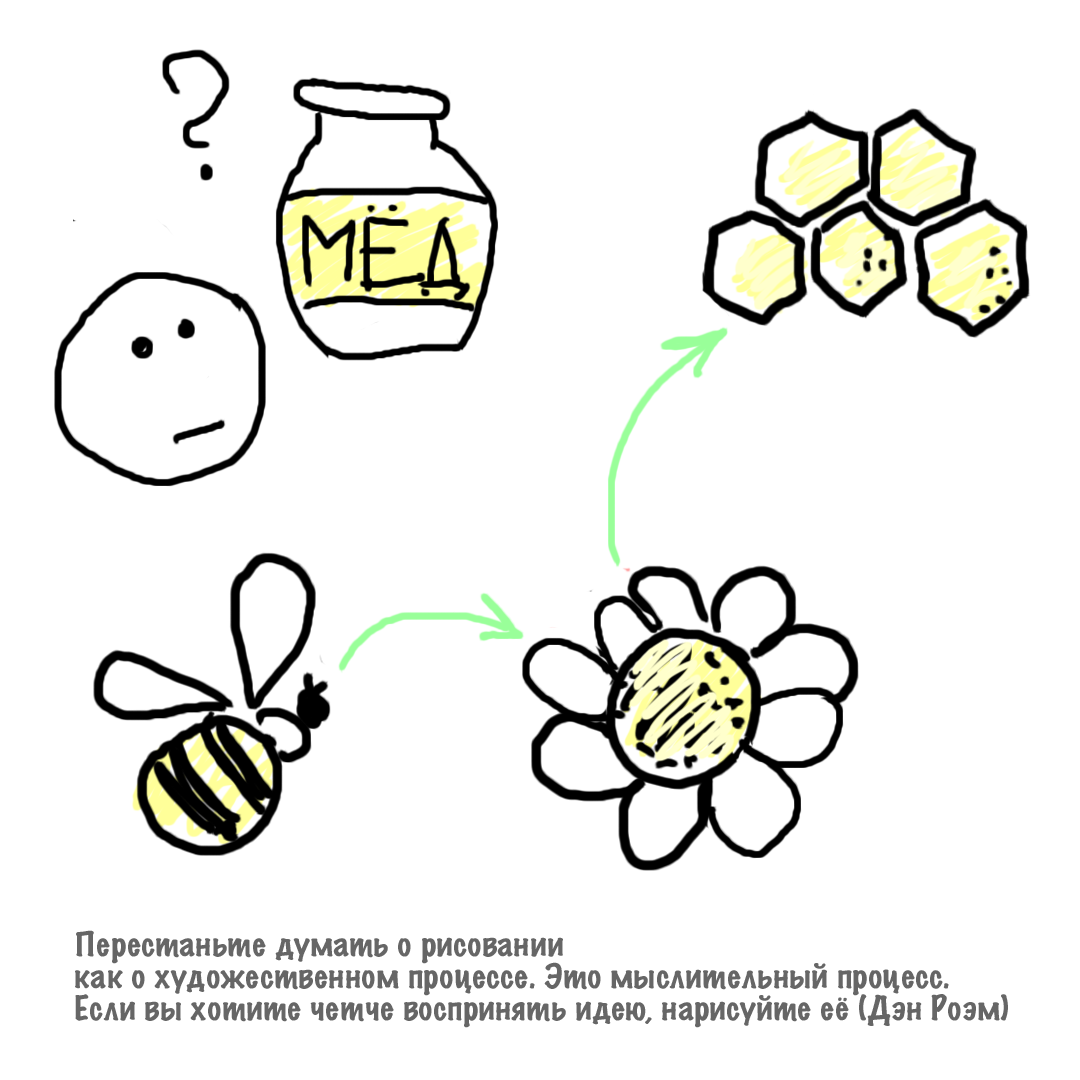
Stop thinking about drawing as an artistic process. This is a thought process. If you want to get a better idea, draw it.
About the style of presentation
The author writes about deep, complex things very simply, illustrates everything with his drawings, uses life stories, jokes, skillfully structures the material.
')
If the center of his book “Visual thinking” is the process of thinking (with all the scientific and fundamental digressions), then this work focuses more on the practice of applying drawings: what exactly needs to be drawn to inspire, sell, teach.
The 176 pages of the book are read in a few hours, but the ideas are so good that you then return to reread what you liked. I usually bookmark a few of the most useful parts of the text. But by the end of the reading, this book turned into a “daisy” - colored bookmark stickers stuck out in all directions.
Small chapters are divided into semantic parts and focus on one problem. At the beginning of each - inspiring (and clarifying the meaning) quotes, and at the end - a summary of 3-5 key ideas and one main thought of the chapter. This makes the book a convenient textbook - you can “refresh” the essence of the chapter in a few seconds.
How Russia helped the author to become who he is
Dan Roem has created a visual problem solving system that is used in business, politics, education, science. His clients include Microsoft, Intel and IBM, eBay and Google, Boeing, Lucas Film, Stanford University and the MIT School of Management, the Navy and the US Senate.
But quite unexpectedly, I learned that “Dan revealed the potential of images in solving business problems in the Soviet Union, where in 1990 he founded the first marketing communications company. He did not know Russian, but once he realized that his explanatory pictures perfectly overcome the language barrier. Since then, Dan Roem has perfected his method and means of visual thinking, which he shares in his books . ”
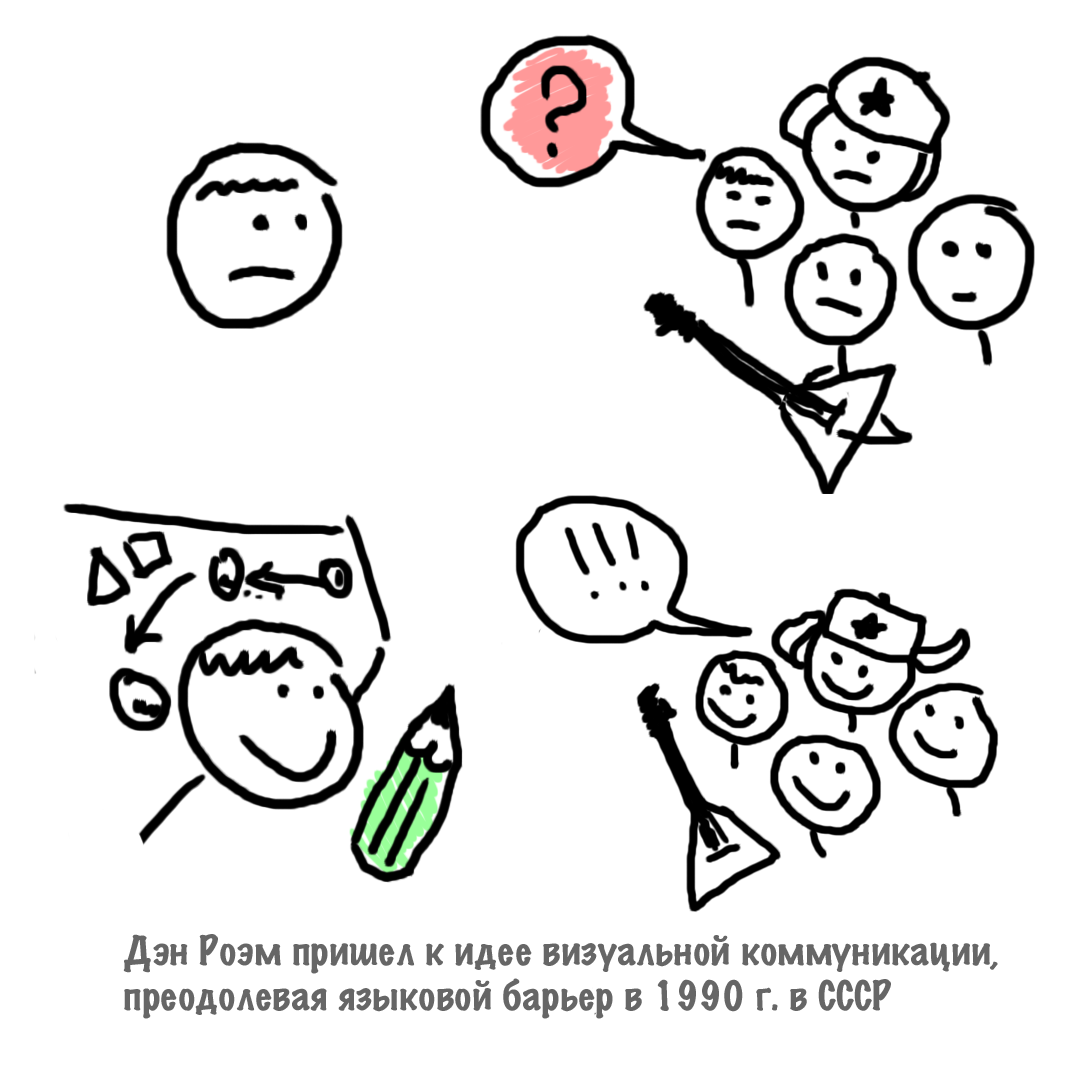
About the structure and content of the book
In the content of 10 chapters, they are divided into three logical parts: why it is important to draw, how to do it and what exactly to draw in each case.
In the first two chapters - “Draw as if your life depends on it”, “The one who draws wins” - Roem proves that today visualization is indispensable for thinking and communicating in any sphere.
In addition to “traditional” facts (90% of all information originated in the last two years (IBM), 90% of online data are visual (Cisco), 90% of entrepreneurs do not know how to use visualization in their business (Roem)) there are several stories of successful people (businessmen). , actors, politicians) and research data. For example:
A recent study found that US presidents, who used images in their speeches, were considered more charismatic than those who did not. “The discovery leads to the idea that a successful expression and description of a leader’s vision may be based on his ability to draw a follower for the followers with a picture of what can be achieved with their help.
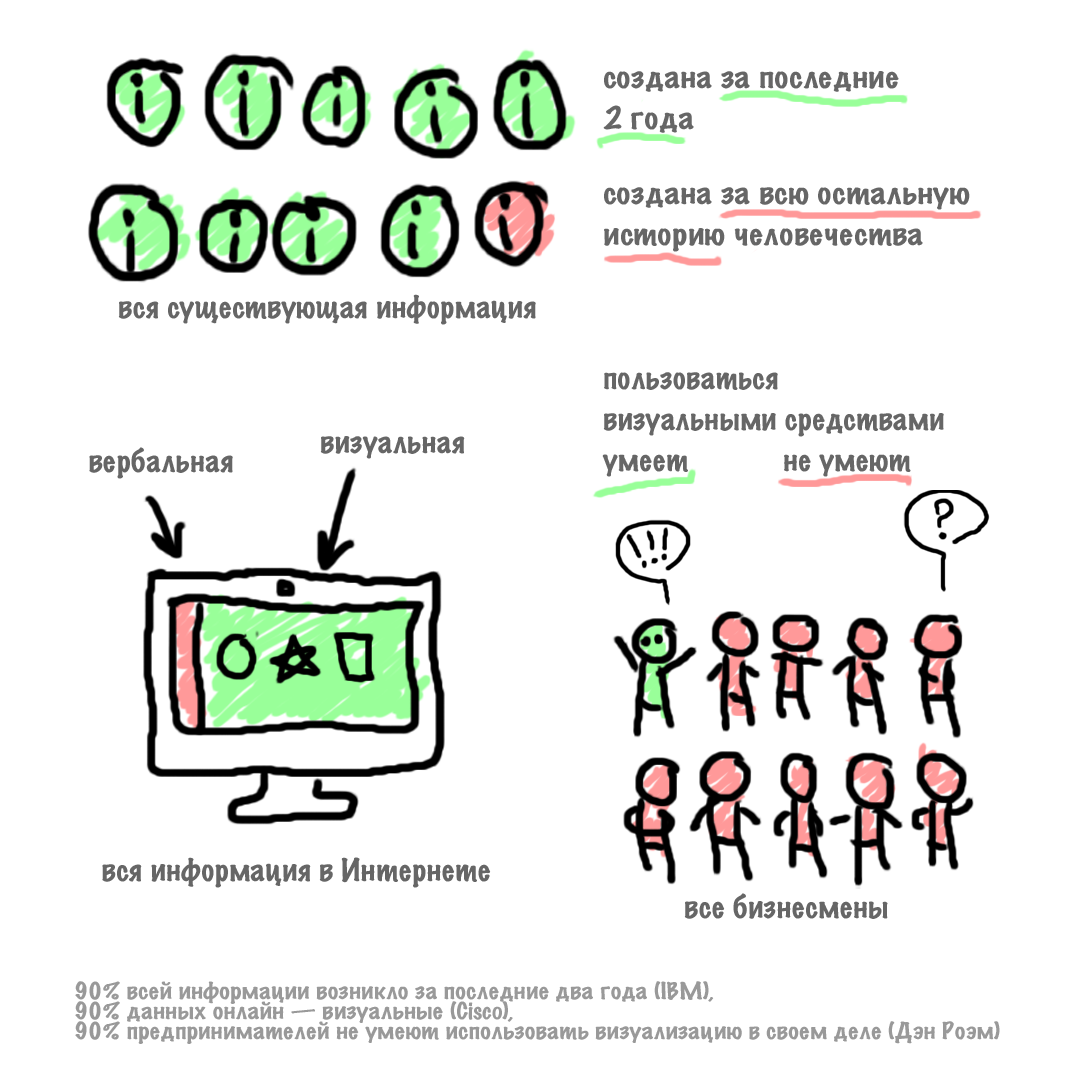
The next three chapters are devoted to the principles of visualization. Chapter 3 is called “First draw a circle, then give it a name.” She - about the answer to the question " How to start drawing ." It may seem to someone that the author pays a lot of attention to the passing moment. But this is only at first glance. One of the most useful ideas of the book is that “drawing is not an artistic process, but a mental one” and communicative. This is a way to show, evoke emotions, activate memory, convince.
The biggest mistake in business visualization is to expect that you are able to quickly draw your whole idea as a complete picture. Over time, you will be able to set yourself such an excellent goal, but at the very beginning this is a harmful unrealistic expectation. You will not go far and, most likely, give up before you will be able to appreciate the power of images in the cleansing consciousness.I was convinced of the veracity of this on my own experience while studying at the college in the specialty “Teacher of Drawing and Fine Arts”. Some classmates painted beautiful expressive paintings with ease and ease, with two brush strokes. I did not succeed. I was ready to give up and never in my life look in the direction of a pencil and paints, but once I took part in a large (All-Russian) poster competition. I did not have any expressed artistic abilities, but there was a great idea, which I depicted as I could with the help of several geometric figures. One morning, they called me from the Union of Designers of Russia and asked where to transfer the prize, because my poster won. An hour later, they called from the local radio and asked if I could give an interview about how I managed to draw such a poster.
Thus, it is very difficult to start drawing (and not quitting afterwards), so it is important that Dan Roem removes the “pictorial stupor” that prevents many people from using their innate superpower.
In chapters 4, “Sight indicates, the mind obeys” and 5 “Start with the question“ Who? ”, The scheme of human vision and perception is examined. Not an abstract hypothetical, but a scientifically based, natural neuropsychological chain. I already wrote about it in the previous review , here the emphasis is that
... vision is predictable. Understand this, and you will find an extremely effective way to constantly and predictably direct the views and consciousness of people, and with the help of the simplest pictures.We all look at objects, people, events, phenomena in the same order. And we start with the perception of who or what is before our eyes? That is, with the hero. He is the first thing we perceive, and a separate chapter is devoted to him.
According to the writer, the hero can be anything, but “I learned a lesson that still helps me. People are interested in ideas and events, but most of all they are interested in other people . ”
And one more, albeit not new, but the most valuable thought - the most interesting for any person will be himself, his own needs and interests. If the “pain” of the listener (viewer, student, client) in the center of the drawing presentation is what all prominent speakers are talking about, then consider that the attention of this person is entirely yours.
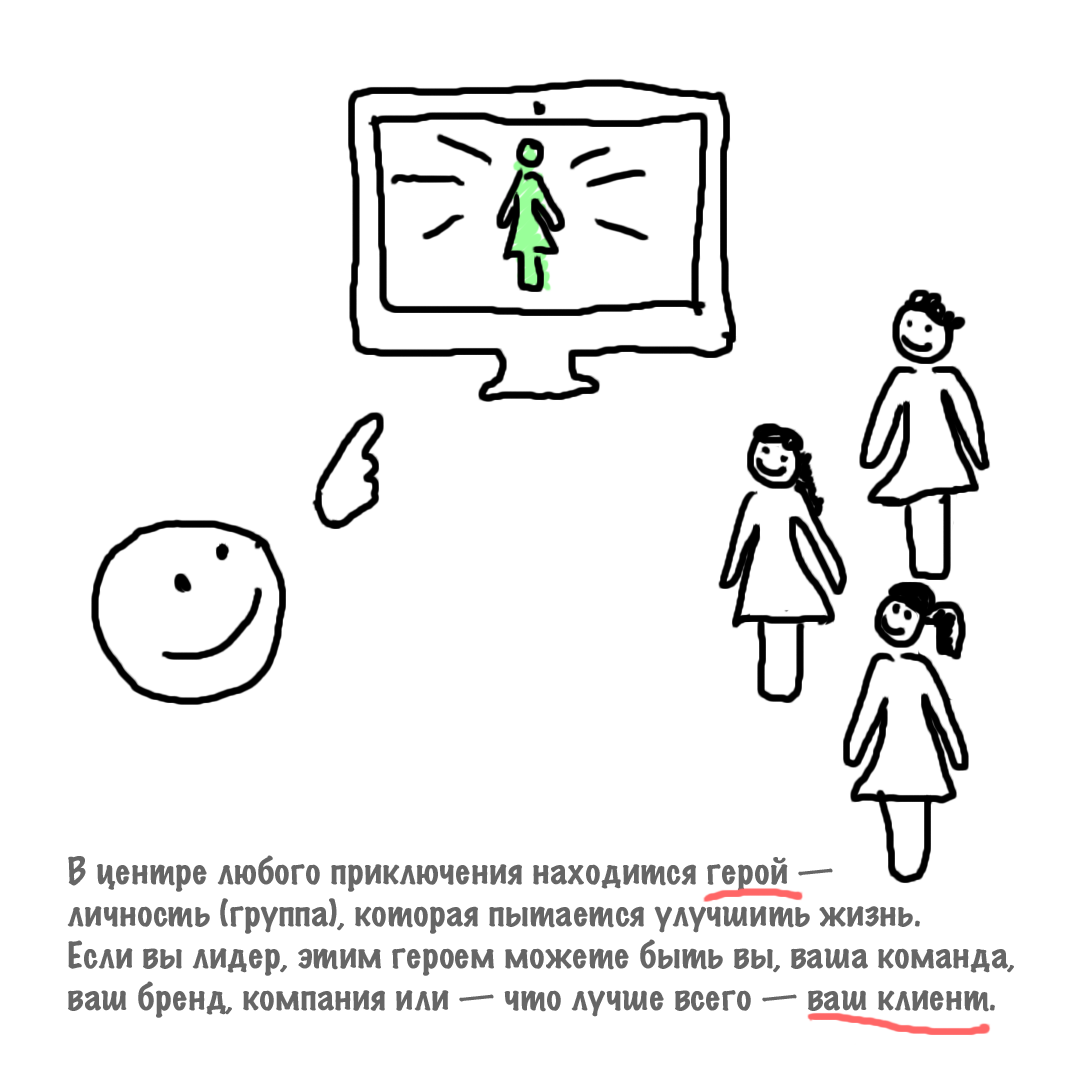
In the center of any adventure is a hero - a person (group) who is trying to improve life (his or others). If you are a leader, this hero can be you, your team, your brand, company or - best of all, your client.
By the way, Dan Roham’s presentation of the American Health Care System on (4) napkins ( American Health Care on (4) napkins ) in 2009 was recognized as the best presentation of the year.
Having depicted a hero (= viewer), you need to show his goal and lead to this goal along one of the seven classic plots / stories. Everyone talks about them, but the explanation in “Paint to Win” seemed to me the most understandable and memorable. This is a return home, rivalry for the prize, fair revenge for the experienced humiliation, fight with the dragon, work on your own transformation, conquering the top and finding true love. Roema's good performance on this topic was in 2014 at the Talks at Google conference.
In the next five chapters, the author describes which specific types of images and techniques best suit the goal - management, sales, invention, training, search for insight.
For effective leadership through images, the most important thing is the goal. Bold, but realistic, big, but achievable. All known leaders are distinguished by the fact that they are able to draw (literally or in the imagination of the audience) the most attractive image of the goal. This is the sixth chapter of the book “To lead, draw a goal”.
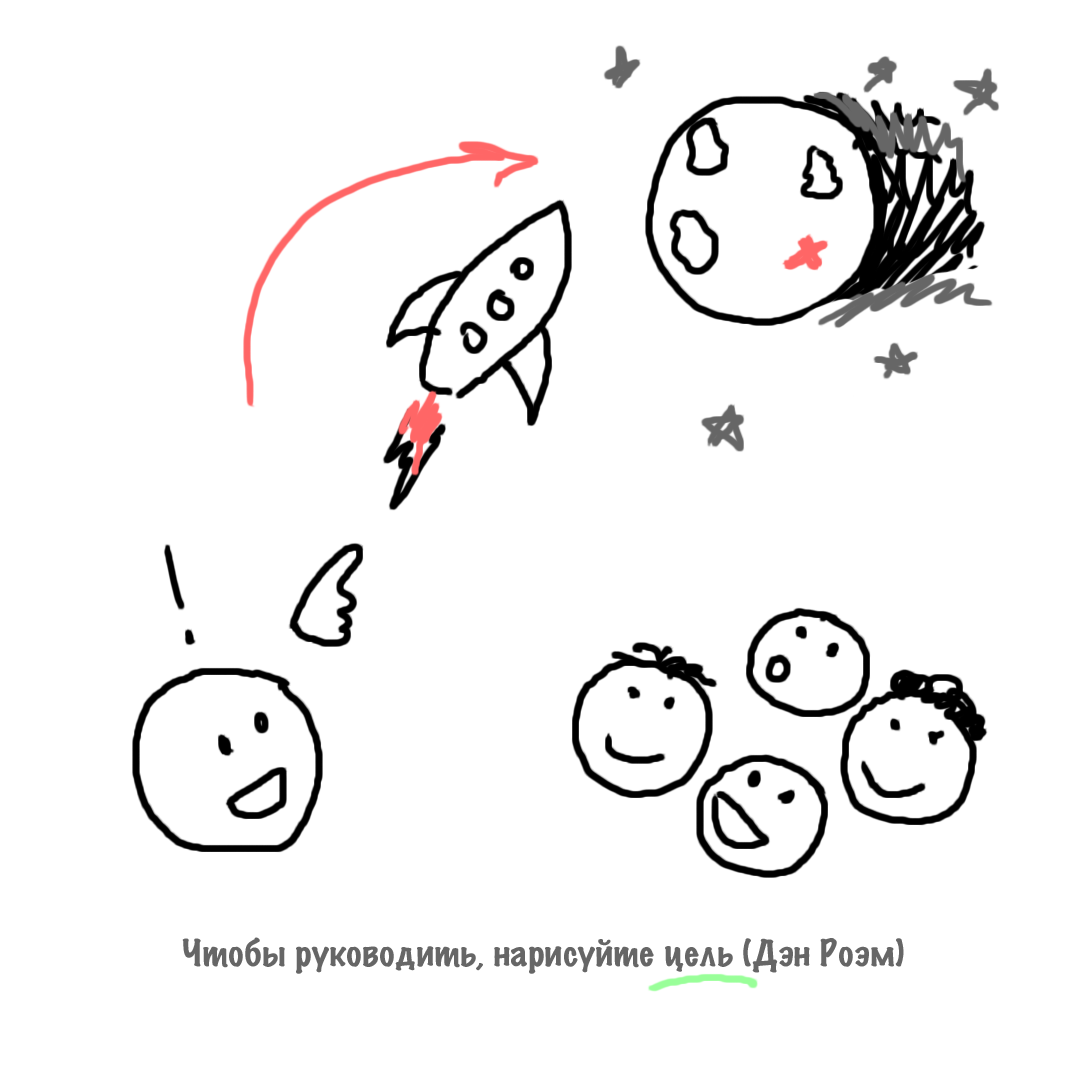
The mission emblem is a simple drawing, but when you look at it, even briefly, you remember where you were going. The emblem turns out to be a non-verbal map of your direction and destination, a symbol ideally describing your idea, belief or brand, without saying a word.Visual sales of products or ideas are based on one principle of visualization. It is revealed in chapter 7 “To sell, draw together”:
If during sales you are trying to convince someone to do something, the best way to prove your case is to show what it looks like before the action and after the deed is done. This is the easiest, most direct and reliable way to motivate: if you and your customer can see the result, both of you will be much more inclined to believe that it is possible.
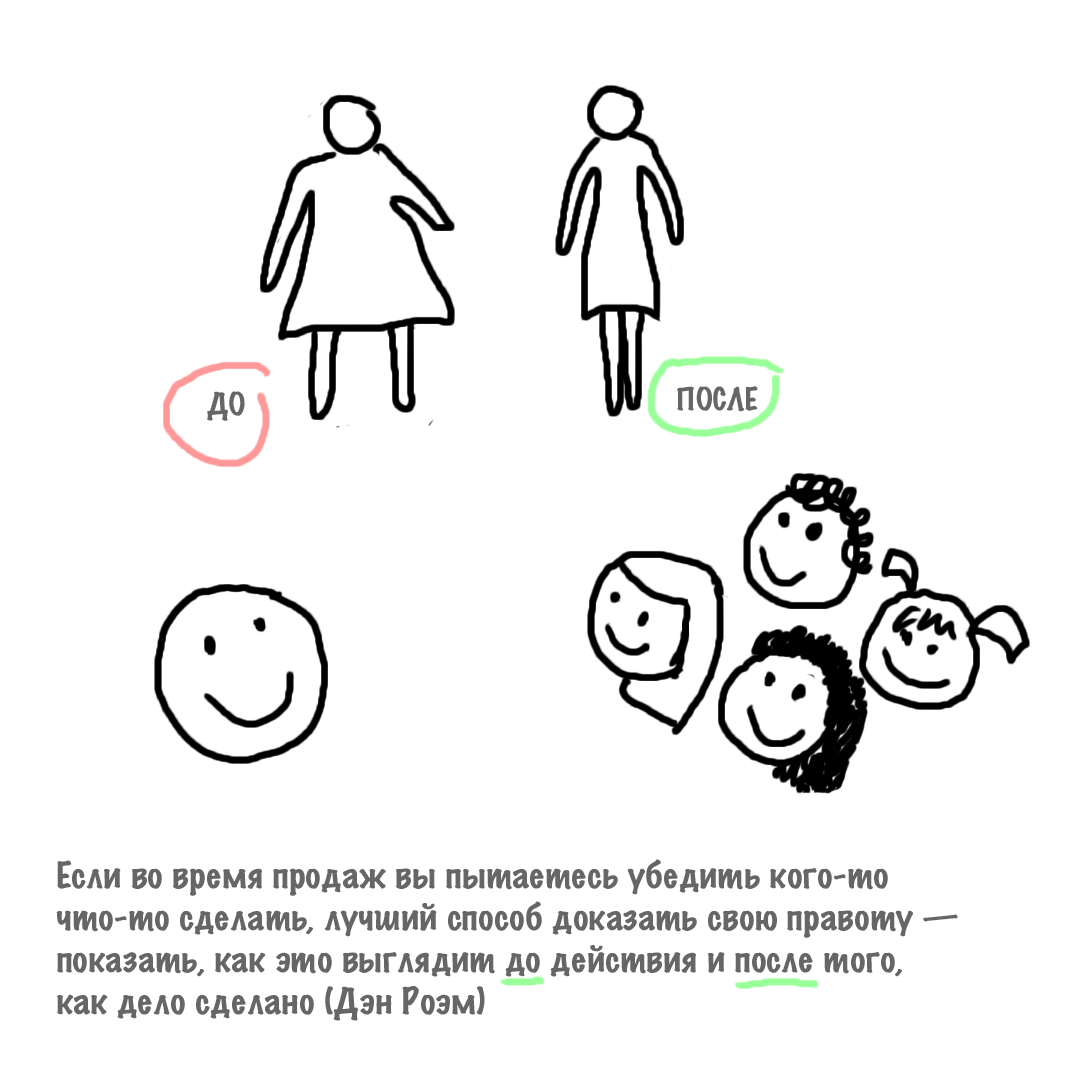
The following secret is in chapter 9 “To teach , draw a story”:
Here is the secret of learning, which I could not understand for a long time. Since the human brain is sharpened by the desire to learn, learning is easier than it seems. It is enough to make the process clear, suggest an achievable goal and a clear direction, and then clear the road.
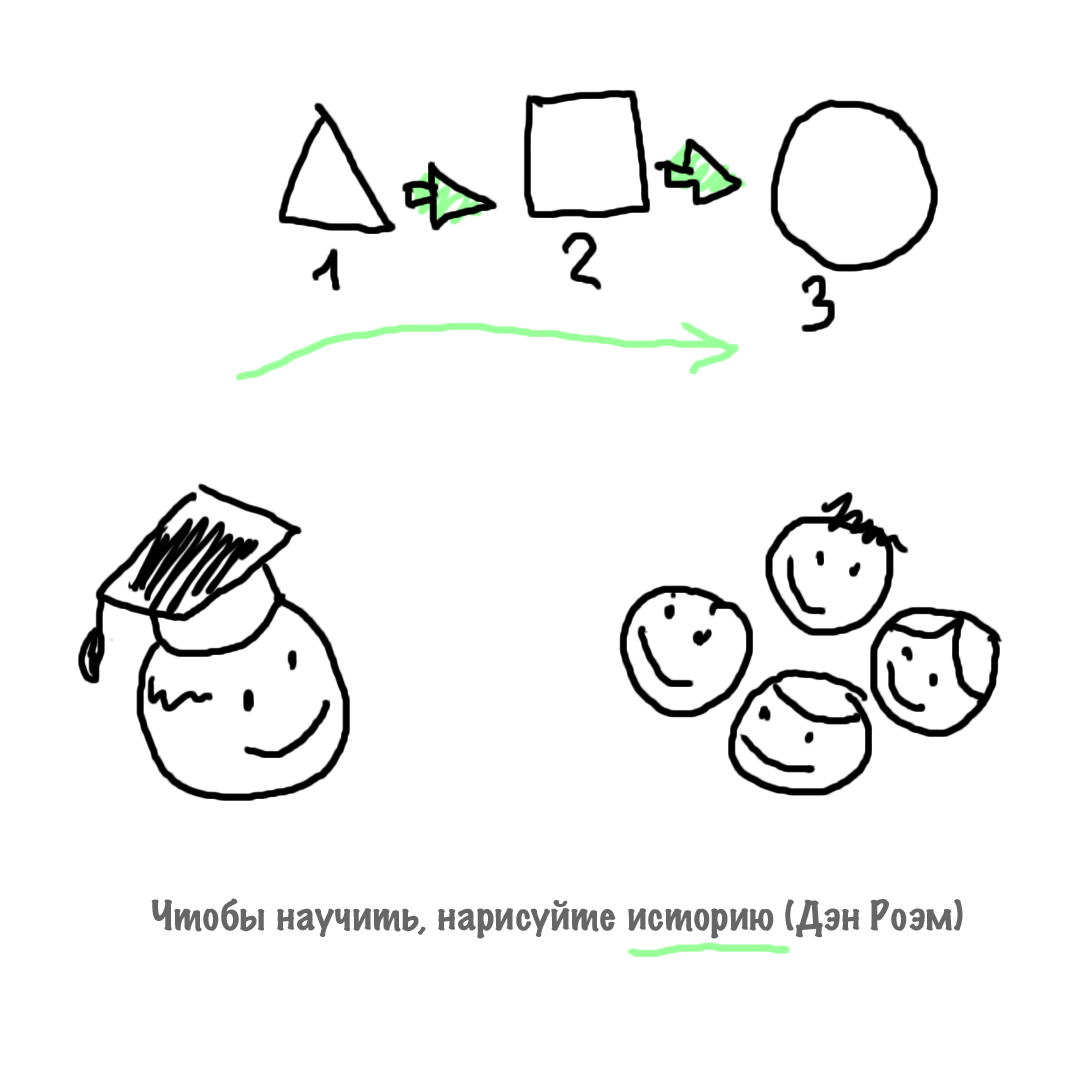
To transfer knowledge, it is enough to indicate a clear goal and draw a process that a student needs to master, step by step.
And finally, in two chapters: the 8th “To invent, draw the world upside down” and the 10th “When you don’t know what to do - draw” the writer suggests using drawing to search for a new one . Visual thinking techniques (without focusing on convincing someone) help recreate what is happening / the problem / outdated thing in a visual form.
The interrelations and details seen in this way allow changing, modernizing, solving, recreating the original objects in a new way.
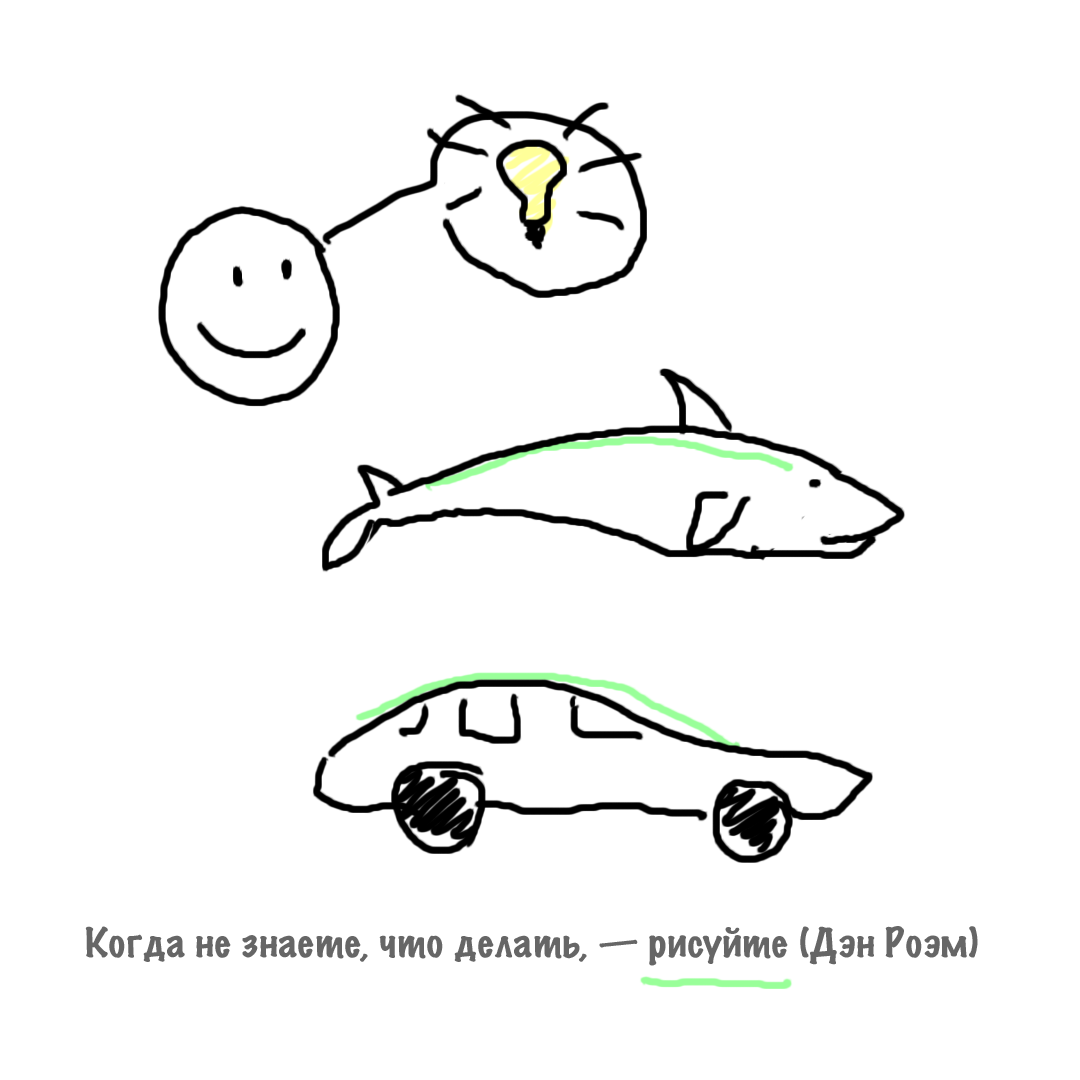
Draw to think clearly
Reading was very exciting and useful. And difficult ideas are so understandable that one wonders why he did not understand this and did not use it before. The thing is that the text of the book itself is proof of the work of Roema’s system. He draws ideas and structures his thinking, and consequently - his speech, formulations in such a way that any complex thought becomes clear.
Drawing expands your awareness. Vision, more than any other feeling, helps us understand the world around us , says Dan Roem. And it's hard to argue with that.
Source: https://habr.com/ru/post/353266/
All Articles